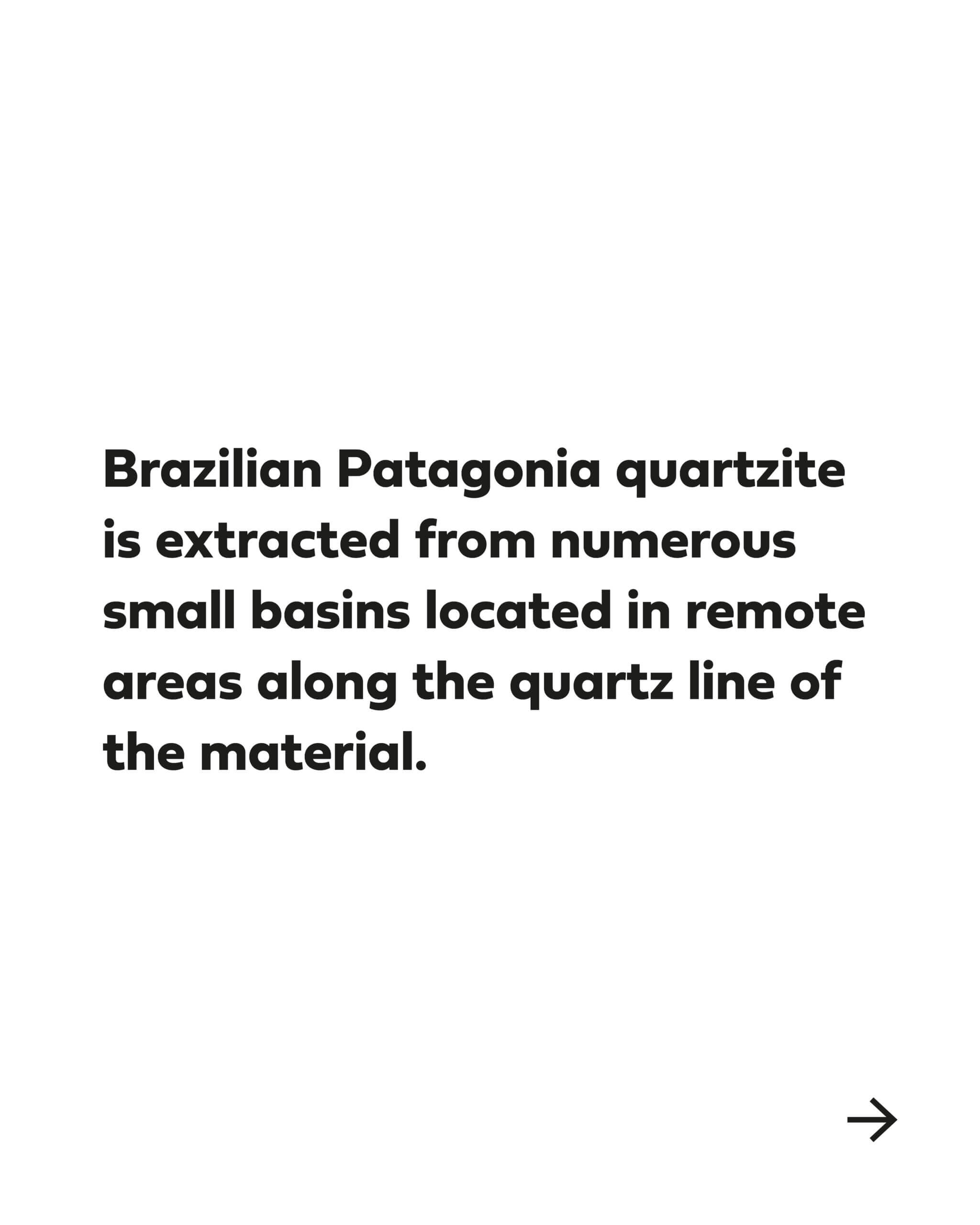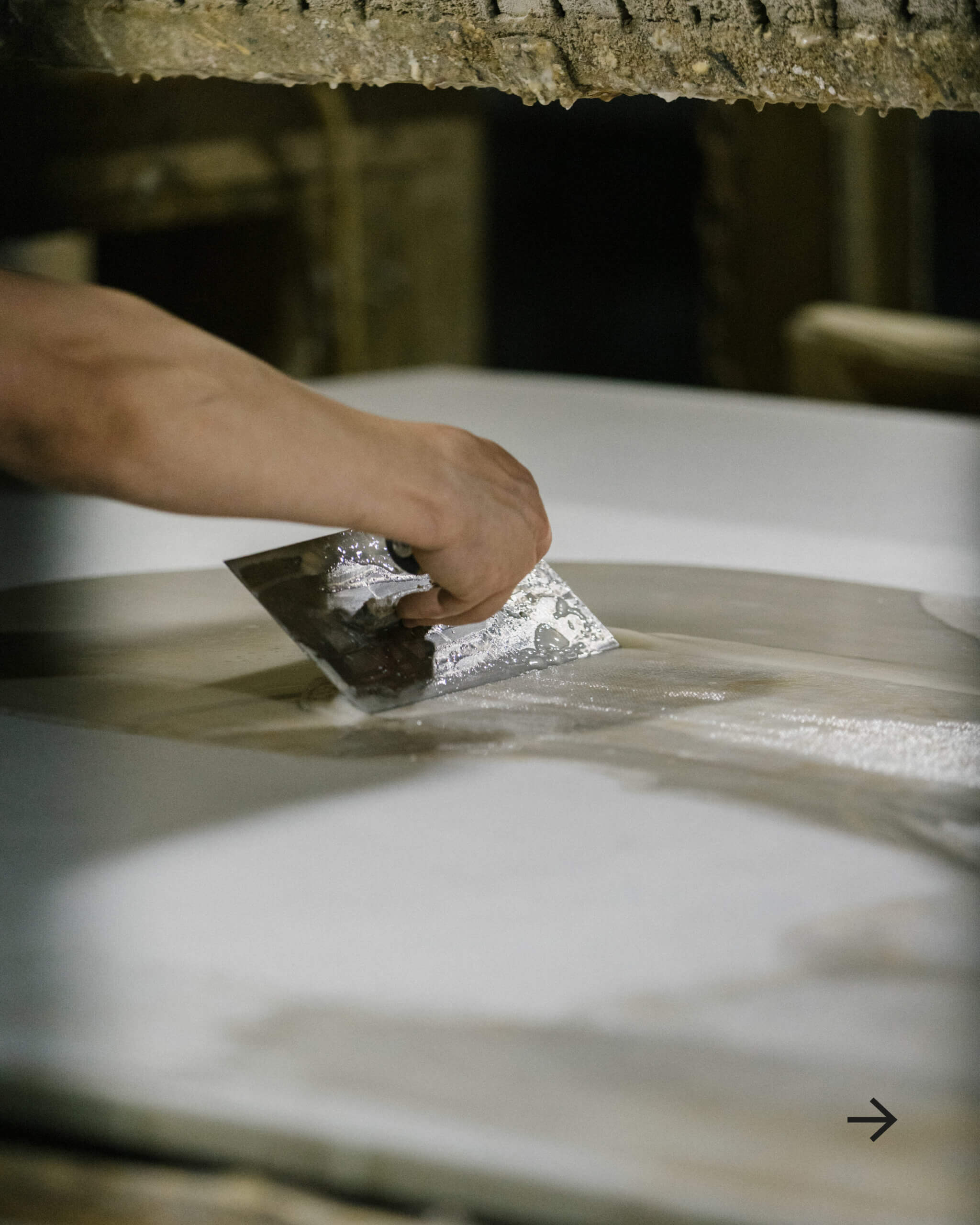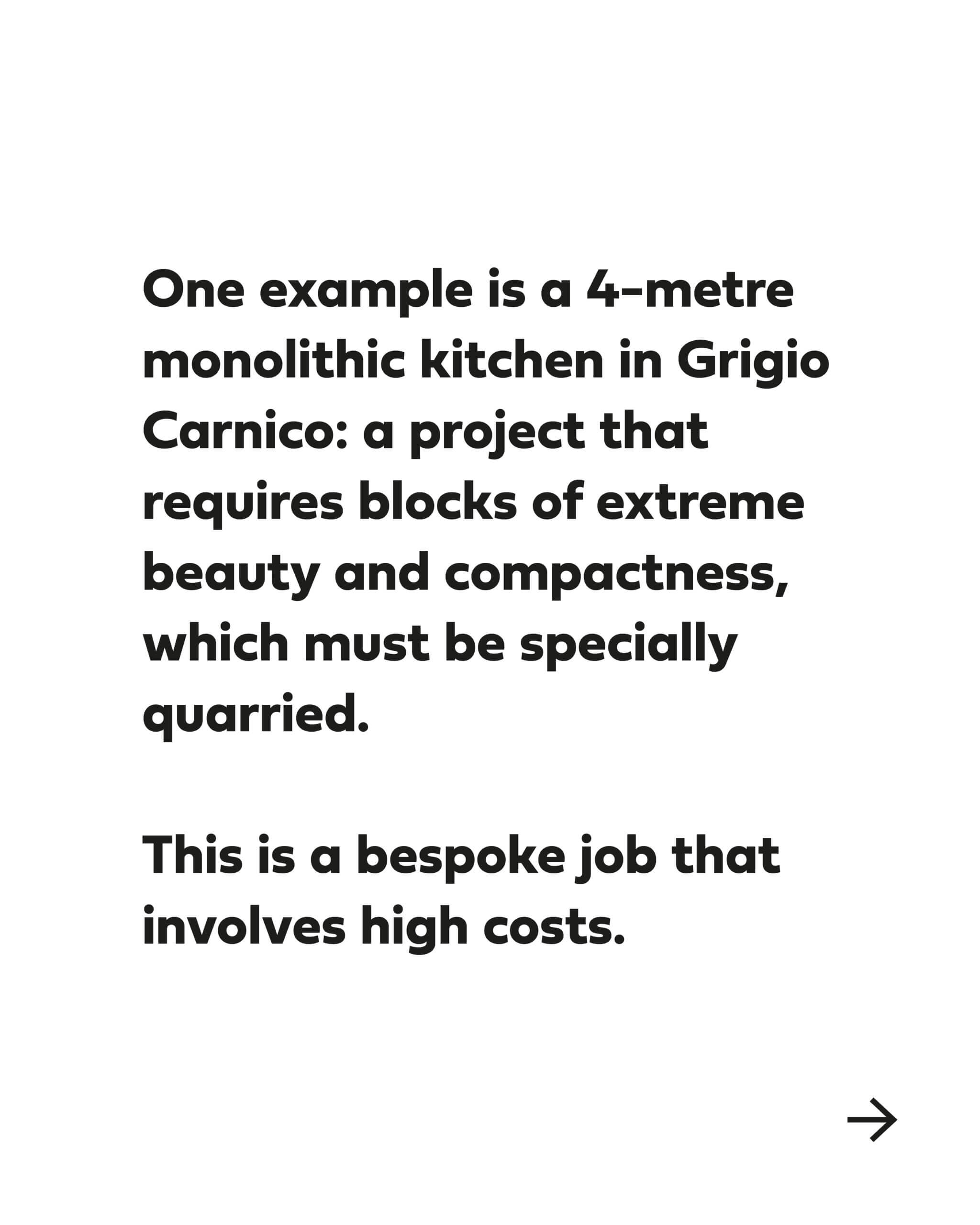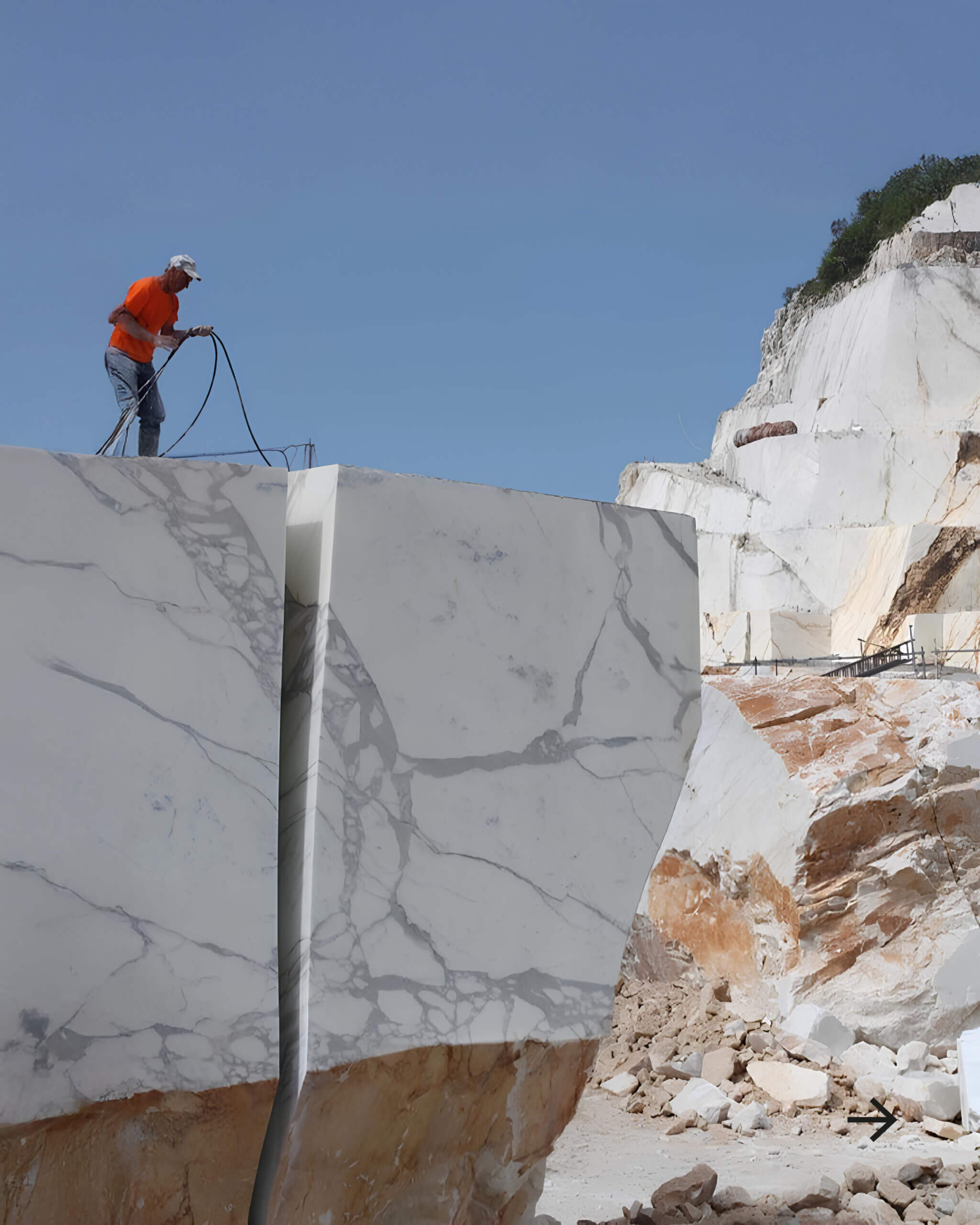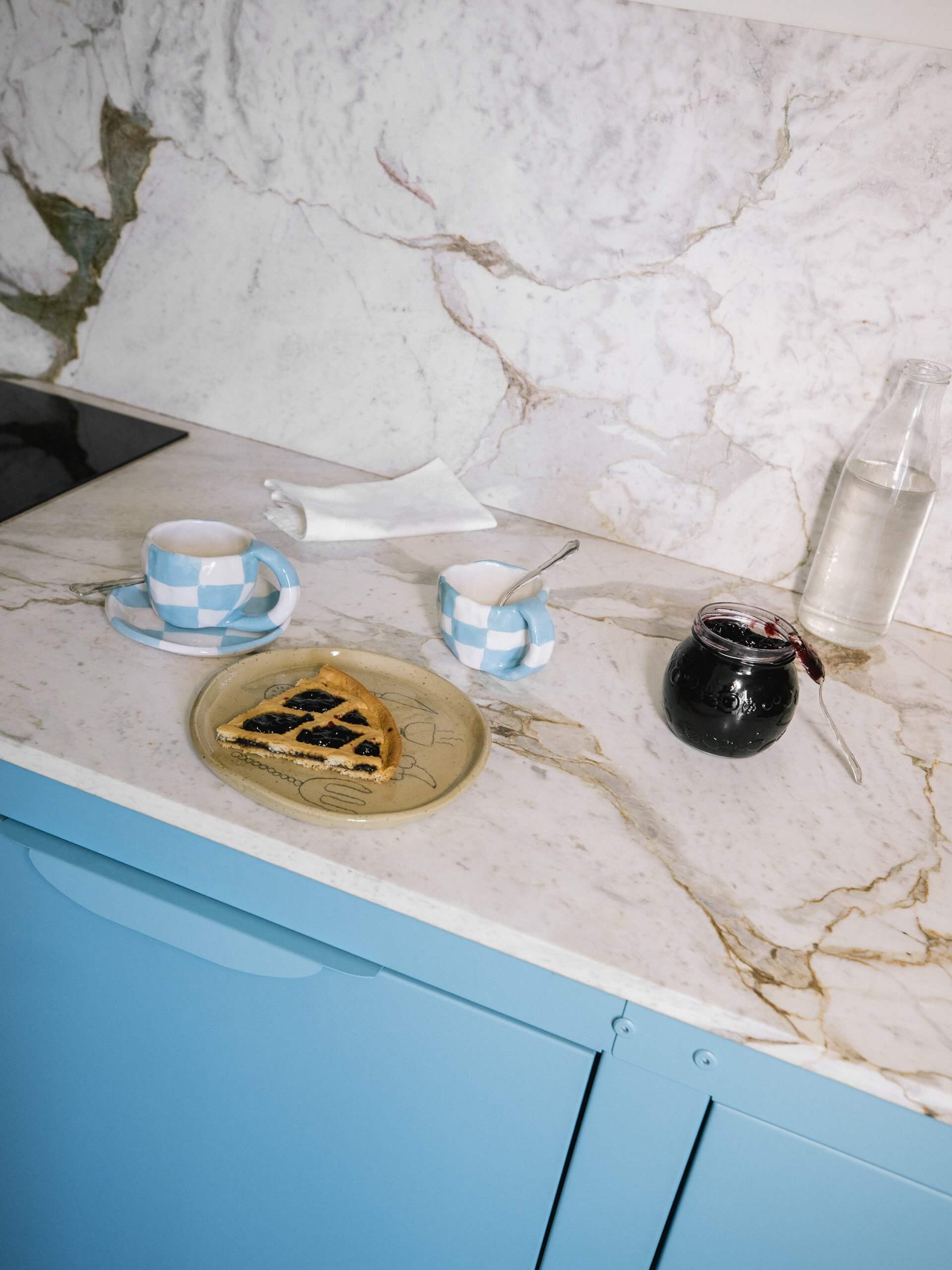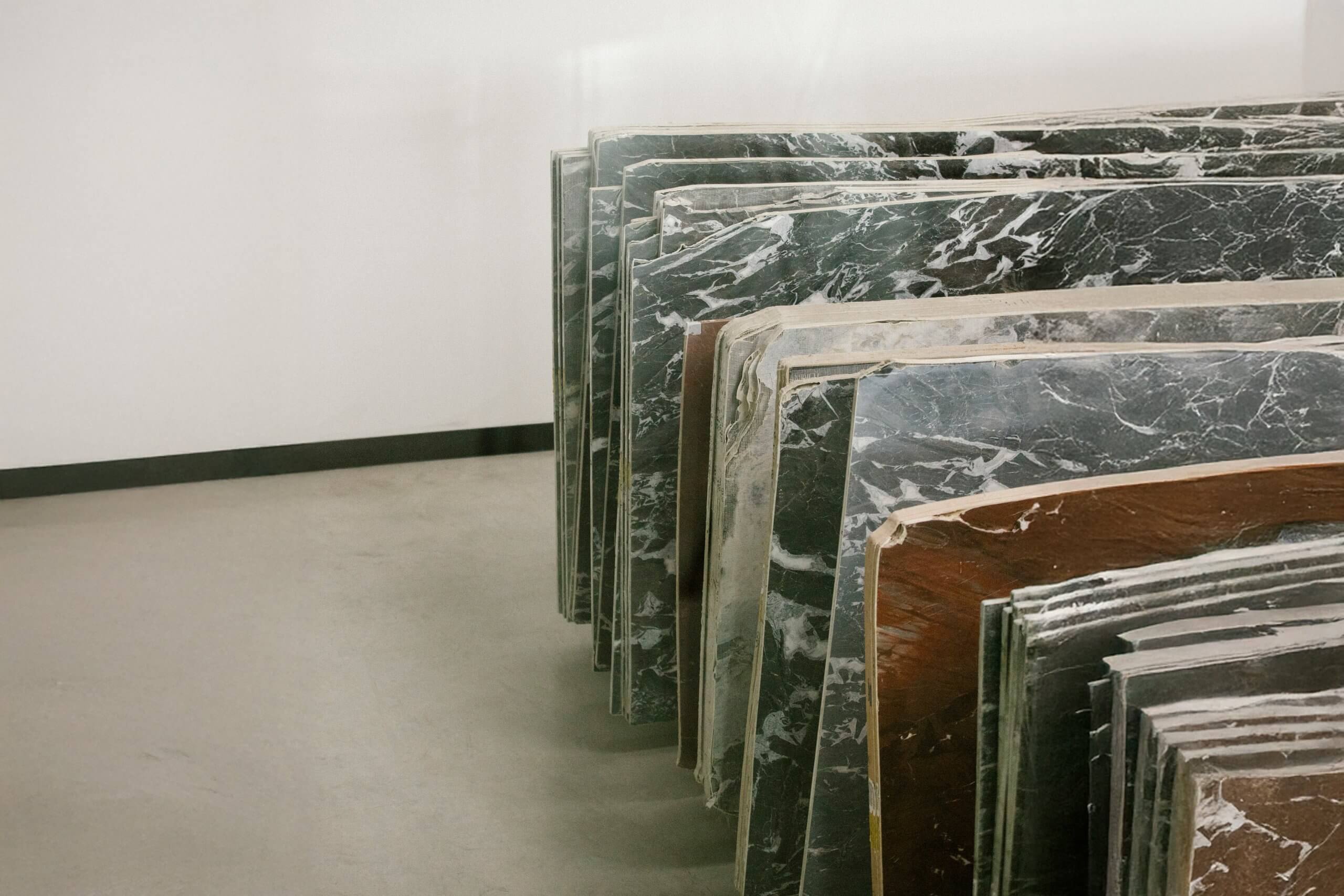Understanding the value of stone
Natural stone is one of the most appreciated choices in the world of interior design for its uniqueness, durability, and expressive strength. However, even among materials that may look similar, there are often significant price differences.
Understanding what determines the value of a slab means analyzing the entire journey that takes the stone from quarry to project: origin, performance, processing, aesthetic selection, intended use, and other variables influence the final price in ways that are often subtle but substantial.
